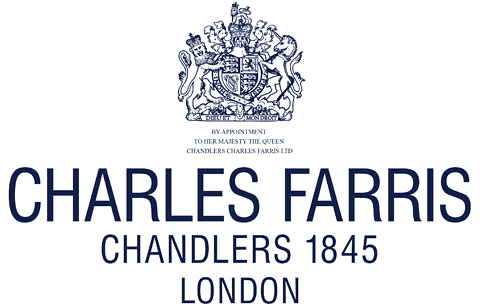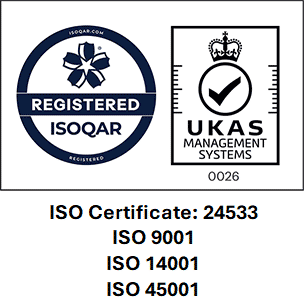Candles Provident Pension Fund
Statement of Investment Principles – June 2024
Introduction
The Trustee of the Candles Provident Pension Fund (“the Fund”) has drawn up this Statement of Investment Principles (“the Statement”) to comply with the requirements of the Pensions Act 1995, the Pensions Act 2004, the Occupational Pension Schemes (Investment) Regulations 2005, and the Occupational Pension Schemes (Investment and Disclosure) (Amendment) Regulations 2018 and 2019. The Statement is intended to affirm the investment principles that govern decisions about the Fund’s investments. In preparing this statement, the Trustee has consulted Charles Farris Limited (“the Employer”) on the Trustee’ investment principles.
Governance
The Trustee makes all major strategic decisions including, but not limited to, the Fund’s asset allocation and the appointment and termination of investment managers. The process for making investment decisions is as follows:
-
Identify appropriate investment objectives
-
Agree the level of risk consistent with meeting the objectives
-
Implement an investment strategy and investment manager structure in line with the level of risk and objectives agreed
When making such decisions, and when appropriate, the Trustee will take proper advice. The Trustee has appointed investment consultants, Capita Pension Solutions Limited (“Capita”), who will be reviewing the investment strategy of the Fund. They are qualified by their ability in and practical experience of financial matters and have the appropriate knowledge and experience to provide such advice.
Investment Objectives
The Trustee is required to invest the Fund’s assets in the best interest of members, and their main objective with regard to investment policy is to secure members’ benefits in full in the least-risk way, using bulk annuity policies with Just Retirement Limited (the “Insurer”). This is initially held as a buy-in policy, which is expected to be converted into a buy-out of benefits before the Fund is formally wound up. When making such decisions, and when appropriate, the Trustees take proper advice from personnel who are qualified by their ability in and practical experience of financial matters, and have the appropriate knowledge and experience to provide such advice.
Risk Management and Measurement
The Trustee is aware of and pays attention to a range of risks inherent in investing the assets of the Fund. The Trustee intends that the investment strategy provides for adequate diversification both within and across different asset classes and that the current investment strategy is appropriate given the Fund’s liability profile. The Trustee’ policy on risk management is as follows:
-
The primary investment risk faced by the Fund arises as a result of a mismatch between the Fund’s assets and its liabilities. This is therefore the Trustee’s principal focus in setting investment strategy, taking into account the nature and duration of the Fund’s liabilities. This risk has been mitigated through the purchase of bulk annuities from the Insurer.The Trustee recognises that whilst increasing risk increases potential returns over a long period, it also increases the risk of a shortfall in returns relative to that required to cover the Fund’s liabilities as well as producing more short-term volatility in the Fund’s funding position. The Trustee takes advice on the matter and (in light of the objectives noted previously) considers the implications of adopting different levels of risk.
-
The Trustee recognises that whilst increasing risk increases potential returns over a long period, it also increases the risk of a shortfall in returns relative to that required to cover the Fund’s liabilities as well as producing more short-term volatility in the Fund’s funding position. The Trustee takes advice on the matter and (in light of the objectives noted previously) considers the implications of adopting different levels of risk. This risk has been mitigated through the purchase of bulk annuities from the Insurer. Residual “surplus” assets continue to be invested in assets that are expected to
deliver potential returns over a long period. -
The Trustee recognises the risks that may arise from the lack of diversification of investments. Subject to managing the risk from a mismatch of assets and liabilities through the purchase of bulk annuities with the Insurer, the Trustee aims to ensure the asset allocation strategy in place for any “surplus” assets results in an adequately diversified portfolio. Due to the size of the Fund’s “surplus” assets and recognising the need to diversify, investment exposure is obtained via pooled vehicles.
-
Longevity risk is the risk that members live, on average, longer than expected. The Scheme’s exposure to longevity risk has been transferred to the Insurer through the purchase of bulk annuities in respect of broadly 100% of the Fund’s liabilities.
-
The documents governing the manager’s appointments include a number of guidelines which, among other things, are designed to ensure that only suitable investments are held by the Fund.
-
The Trustee recognises that, where appropriate, the use of active management involves a risk that the assets do not achieve the expected return. However, they believe this risk is outweighed by the potential gains from successful active management, in particular in regions or asset classes where this potential is greater than others. Therefore, the Fund’s assets are managed through a mixture of active and passive management which may be adjusted from time to time.
-
The safe custody of the Fund’s assets is delegated to professional custodians appointed by the managers.
Should there be a material change in the Fund’s circumstances, the Trustee will review whether the current risk profile remains appropriate.
Investment Strategy
Given their investment objectives, on 14 September 2023 the Trustee purchased a bulk annuity policy from Just Retirement Limited in respect of broadly 100% of the Fund’s liabilities. The bulk annuity policy remains an asset of the Fund under the control of the Trustee and is not yet individually allocated to members (i.e. it is a “buy-in” policy). The Fund’s bulk annuity policy is illiquid and cannot be changed or surrendered. In addition to the bulk annuity policy, the Fund has legacy private equity and loan notes holdings. It is the Trustee’s intention is to sell these assets as part of the Fund’s wind-up process. The Fund also holds cash in the Trustee Bank account and in a cash / sterling liquidity fund with Legal and General Investment Management (“LGIM”).
Expected Return
Cashflow from the buy-in policy will meet the benefit payments but will not generate any expected return above the liabilities. “Surplus” assets not required for near term operational purposes have been invested in legacy private equity and loan notes holdings, Trustee Bank Account, and LGIM Cash Fund.
Investment Mandates
Following the bulk annuity policy transaction in 2023, the Fund holds cash in the Trustee Bank account and in a cash / sterling liquidity fund with Legal and General Investment Management (“LGIM”). LGIM is regulated under the Financial Services and Markets Act 2000. The Trustees have a rolling contract with LGIM. The Fund has legacy private equity and loan notes holdings. It is the Trustee’s intention is to sell these assets as soon as practical as part of the wind-up of the Fund.
Investment Manager Remuneration
The Trustee monitors the remuneration and incentives, that are paid to LGIM and how it rewards its key staff who manage client funds, along with how remuneration and incentives motivate employees who manage client funds.
As part of the monitoring that the Trustee carries out on a periodic basis, they should ensure that this policy is in line with its investment strategy.
Financially material considerations over an appropriate time horizon
The Trustee believes that their main duty, reflected in their investment objectives, is to protect the financial interests of the Fund’s members. The Trustee believes that ESG considerations (including but not limited to climate change) and stewardship in the selection, retention and realisation of their investments is an integral part of this duty and can contribute to the generation of good investment returns. Legislation requires that the Trustee forms a view of the length of time that they consider is needed for the funding of future benefits by the investments of the Fund. This time frame is short enough that there is limited scope for ESG considerations to be financially material, especially given that the assets are held in a bulk annuity policy.
The exercising rights attaching to the investment is also much more limited within a bulk annuity policy although the Trustees note that the insurer is a signatory to the UN Principles for Responsible Investment.
Compliance with Myners’ Principles
The Trustee understands that the Myners’ Principles are non-applicable as the Scheme has invested into a bulk annuity policy with the aim to complete a full buy-out as soon as practical.
Employer-Related Investments
The Trustee’s policy is not to hold any direct employer-related investments as defined in the Pensions Act 1995, the Pensions Act 2004 and the Occupational Pension Schemes (Investment) Regulations 2005.
Fee Structures
LGIM is paid an annual management fee on the basis of assets under management. The investment consultant is paid on a time-cost basis for providing ‘core services’. The Trustee can also request that the investment consultant undertakes ‘out-of-scope’ projects, which may be undertaken on a fixed fee or time-cost basis - as negotiated between the Trustee and the investment consultant.
Review of this Statement
The Trustee will review this Statement at least once every three years and without delay after any significant change in investment policy. Any change to this Statement will only be made after having obtained and considered the written advice of someone who the Trustee reasonably believes to be
qualified by their ability in and practical experience of financial matters and to have the appropriate knowledge and experience of the management of pension scheme investments.
J R Simpson, Trustee
Date 1 July 2024
For and behalf of the Trustee of the Candles Provident Pension Fund




